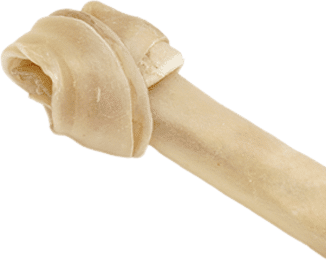


When you first welcome your new labrador retriever puppy home, the last thing that may be on your mind is life expectancy.
After all, your dog is still a wee pup!
But if you don’t consider the average lifespan of a labrador, then you can’t do everything in your power to make sure that your best friend and newest family member has a rewarding quality of life — and a long one, at that!
Saying goodbye to your furry friends is one of the most heartbreaking things any family will have to do. So the key is to help your pups mature into happy and healthy adult labradors who live as long as they can.
In this article, you’ll learn how life expectancy varies among the labrador breed based on some common factors, the health issues to watch out for, and what you can do to help labradors live a long life.
There’s some consensus over the average lifespan of a labrador — but there’s a lot of variance because of owner care, typical health issues, and even the dog’s pedigree.
In general, experts agree that labrador retrievers will live for around 12 years of age. With preventative care, your labrador retriever may even advance to 13 years of age.
Meanwhile, some of the oldest labrador retrievers can reach 14 years (that’s like humans living to age 78). However, labs with health problems tend to have shorter lives and live to reach 10 to 11 years.
While this may seem a relatively “short” time to you, keep in mind that a dog that’s 10 years old is 60 years of age in human terms. You might also feel good to know labradors are the world’s longest-living breeds known out there. However, that doesn’t mean you can’t do several things to make your pooch’s lifespan longer.
The good news is that both male and female labrador retrievers live around the average lifespan of 12 years. However, there is something you can do with female dogs that can help them live longer. We’ll get to that later on.
For now, you should know that the differences between male and female labs are physical and even behavioral, but they don’t necessarily affect longevity. These differences include traits like:
However, another related genetic characteristic causes a shorter life expectancy in a certain type of lab. Surprisingly, it’s coat color. So it’s better to know about this distinction before you get your puppy.
Of course, when owners bond with their warm, friendly, and sweet labradors, this typically doesn’t matter.
You may hear that chocolate labs live a shorter life and have many health conditions that increase as they age. Unfortunately, that’s entirely true — their lives are not as long. They may only live up to 10 years of age. Meanwhile, yellow and black labradors survive 10% longer than their brown-coated counterparts.
Now, coat color might, at first, seem to be a matter of aesthetic. However, you have to think about it from a breeder’s perspective. A lab’s coat colors are based on dominant or recessive genes.
Chocolate is a recessive gene, which means that both parents of a chocolate labrador retriever would need to be that color. A breeder would have to breed only labs with that gene, which would mean a much more limited gene pool.
That’s why 23.4% of chocolate labradors experience a condition known as otitis externa (compared to 12.8% of black labs and 17% of yellow labs). This is an inflammation of an ear canal, which makes your pooch more prone to infections. Fortunately, this particular disease is not serious or life-threatening.
Brown labs are more likely to contract other skin diseases, such as hot spots. This is a form of acute moist dermatitis and can cause your dog to constantly lick, bite, and scratch an inflamed area until it becomes a painful skin lesion.
Even though every dog has its day, it’s a good idea to know about significant conditions that might affect their life and longevity, especially as they get older. You may be wondering: What do labs usually die from?
Obesity is, in fact, the number one cause of arthritis, diabetes, bloating, and flipped stomachs, which can then cause your lab to suffer needlessly. The best way to keep them healthy on this front is to make sure they get plenty of age-appropriate exercise and control their diet.
A lab has a predisposition for a condition known as hip dysplasia. This is a form of degenerative joint disease, which affects around 5.5% of the labrador population. A lab is also more prone to arthritis — and additional weight will only create added pressure on the joints of a large canine.
Hip dysplasia is a rough diagnosis for a labrador. Once the onset occurs, either due to age or weight (or both), it’s harder for them to run and play as they once might have. Yet, they need the exercise to keep the weight off, so it can be tricky managing this issue.
It’s rare for puppies to be born with or develop the issue of diabetes when they’re young, but it can happen. It’s best to get a comprehensive health history from your breeder as this could be an inherited disease.
At Snowy Pines, for example, our guarantees offer a full replacement against genetic defects in labrador puppies for five years.
Though it does affect some of the oldest dogs, diabetes is still fairly common among a wide variety of breeds. Labradors don’t have a higher chance of developing the condition than other types of dogs.
As in humans, diabetes in dogs comes down to the balance of insulin and glucose. Factors like a dog’s diet, inflammation, genetics, and overall obesity can increase the chances of experiencing this disease.
Also known as gastric dilatation volvulus, this is a serious possibility for labradors in particular because they love their food. Overeating too quickly causes air to become trapped in the dog’s stomach, which then bloats and twists.
The swollen stomach can start to press on blood vessels, blocking blood and oxygen, and your dog may collapse. If they’re not operated on, dogs with GDV will suffer in pain and pass away in a few hours.
Cancers
Cancer in dogs is quite a bit like cancer in humans. There are a variety of factors that may contribute to your dog developing this condition. If they do, it’s a matter of time before they pass away because even operating on the tumor won’t necessarily make a difference to lifespan.
A particular type of cancer that affects labradors more than other breeds is lymphoma. It’s a type of cancer that affects white blood cells in the body.
If your lab experiences this form of cancer, the prognosis is good! You can easily identify the issue with a simple blood test, and it’s easily treatable, with a high success rate, using chemotherapy.
There are quite a few actions you can take to help extend your dog’s life.
This is the most important step you can take to support your dog’s long life. Choose the right breeder, as they’ll be able to tell you about any potential inherited diseases. Labs can inherit several diseases including:
At Snowy Pines, our dogs are closely and carefully monitored for developing conditions. We pay close attention to our dogs’ needs, resulting in impeccable bloodlines for all our white labrador puppies.
Having a spayed female and a neutered male reduces the incidence of certain types of cancers. It also eliminates the possibility of an unwanted pregnancy, which, in young dogs, can cause quite a bit of stress leading to inflammation.
Coordinate and consult with your vet to balance your labrador’s diet and feeding routine. Choose an age-appropriate food formula with the right nutritional value for their health. With labs, less is always more, and regular, once-a-day feeding is enough.
While exercise is important for keeping an overweight dog healthy, you want to be careful not to overdo it. Too much exercise could cause additional strain on a dog’s joints.
Furthermore, some young lab pups are born with a condition known as EIC or exercise-induced collapse. Once again, the right breeder should make you aware of this and screen dogs before breeding.
Dog food is formulated to give your puppy everything they need throughout their life in most cases. But nutrition is hardly ever straightforward, and it’s always a good idea to approach it from different angles. That’s why I always recommend using a good supplement to help ensure your dog gets everything they need. It can help prevent simple health maladies and keep your dog happier, longer.
It’s always hard to say goodbye, but the best reward and consolation you can give yourself is that you gave your labrador the best life possible. Use these tips to help your black or yellow lab live a high quality of life with minimal health conditions.